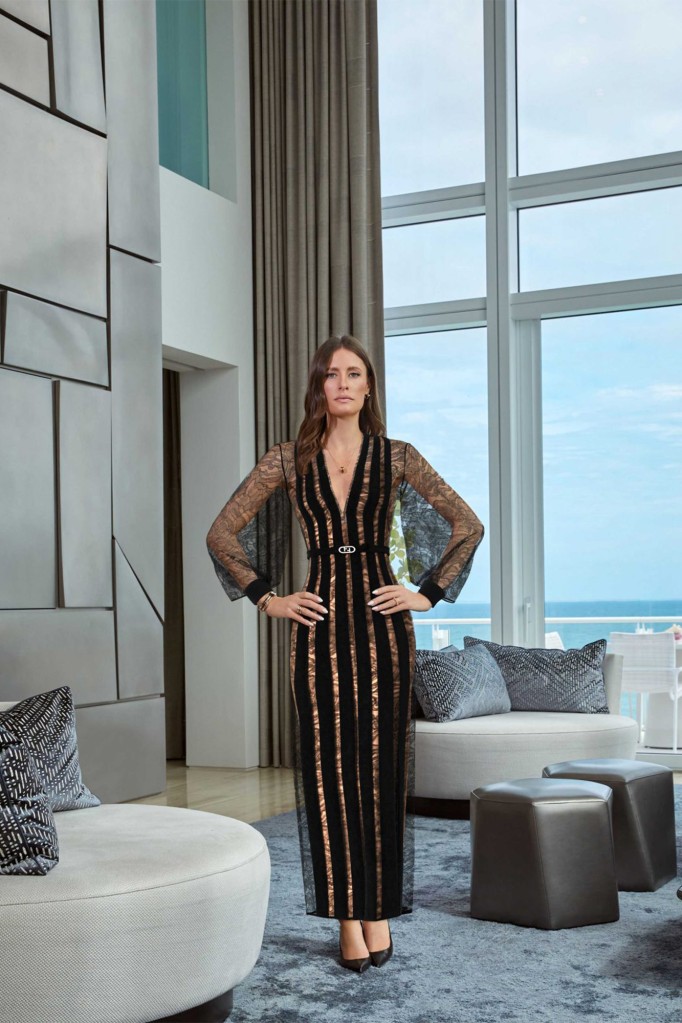Shared from nypost.com
Gucci, Balenciaga and Fendi are just a few of the luxe labels that are rolling out digital clothing collections for gaming avatars to don while they’re dominating the world of virtual reality.
And when it comes to buying high-end couture for their cyber characters, modish members of the approximated 179.6 million players in the metaverse — a real-time, 3D universe where online users can live vicariously through their customized avatars — are sparing no expense to ensure that their internet icons are dressed to impress.
“Shopping and gaming are my two favorite things,” VR fashion influencer Leah Ashe, 28, told The Post. “Being able to buy high-end accessories for my avatar, who is an extension of me, makes me feel more connected in the metaverse.”
Through the popular online gaming platform Roblox, she’s purchased her avatar, NotLeah, four Gucci purses, a pink Rolls-Royce and an assemblage of sprawling pink mansions.
“Whenever NotLeah gets the newest, hottest [accessory], all the other avatars are so jealous,” Ashe, a native of San Francisco who boasts over 4.8 million subscribers to her Roblox lifestyle YouTube channel, said, laughing. “But I like treating her to the finer things. I grew up really poor, so it feels like I’m creating the life that I used to dream of.”
‘A reflection of who we are’
Roblox’s in-game currency is known as “robux,” and users can purchase it with cash via their debit card or another form of electronic payment. Each robux is worth about 100 times the value of a US bill; thus, a gamer would pay $100 cash in exchange for $10,000 robux.
Ashe recently spent more than $2,000 in robux (about $25) on a limited-edition pink sequin Gucci GG Marmont bag for NotLeah to tote. She then dropped $2,100 real dollars on the exact same real-life handbag.

Gucci introduced a virtual collection to Roblox in May. The limited-edition items were quickly snapped up, and reports of virtual bags fetching more money than the real thing on the resale market began popping up, including a Queen Bee Dionysus bag that sold for 350,000 Robux, or more than $4,000, last summer.
So far, gamer Lana Zylstra says she “spent a total of 10,000 robux on just the Gucci accessories” — including a black spiked basketball-shaped purse, a floral Dionysus shoulder bag and a flacon of Gucci Bloom perfume — for her avatar Lanaraee.

Zylstra, a professional ballerina from Corona, California, told The Post she’s also snagged Lanaraee some digital duds from Forever 21’s and Ralph Lauren’s virtual collections.
“It’s important for me to buy these items because avatars are a reflection of who we are or how we want [to be perceived in the metaverse],” said Zylstra, who declined to share her age. “It sounds crazy, but fashion is a huge deal in online gaming — just as much it is in the real world.”

The future is virtual
Luxury brands have taken notice and are looking to connect with a younger audience that increasingly spends its time in digital spaces. And that number is only expected to grow: According to a December 2021 Statista survey, more than 74% of American adults are, or are considering, building lives in the virtual world.
“The virtual world is creating its own economy,” Gucci CMO Robert Triefus told Fast Company. “Virtual items have value because of their own scarcity, and because they can be sold and shared.”
Unlike the rarefied shops of Madison Avenue, high-end virtual fashion aims to be more egalitarian — at least in theory.
“The digital fashion world is an inclusive place for designers and [gamers],” Daria Shapovalova, co-founder of metaverse fashion marketplace DressX, told The Post. “The clothes fit all sizes, the items look good on everyone [in the metaverse] and the designer labels are more accessible and affordable for everyone.”

From the $9.99 DressX subscription app, gaming buffs can score computerized apparel from lesser-known labels to renowned couturiers such as Fendi and Balenciaga.
Patrons can then shop for gear for their in-game avatars — or for themselves to wear virtually on social media and Zoom calls — with prices running anywhere from $5 to much, much more. For instance, a virtual head-to-toe version of the bedazzled, custom-made Peter Dundas creation rocked by singer Mary J. Blige during this year’s Super Bowl Halftime Show performance costs $8,400.
“Digital fashion allows people to discover stylish brands on an up-close and personal level,” said Shapovalova, noting that DressX shoppers can use its technology to try on any article of clothing for free before deciding to purchase it for their digital wardrobe.
“At this stage in digital fashion development, most designers are creating virtual reality clothing lines as a marketing tool, rather than a major revenue stream, to attract this new wave of metaverse consumers.”

Fashion worlds collide
Still, the lines between real and fake continue to blur.
Last month, Haute Living magazine featured a cover fashion shoot with blockchain investor Megan Kaspar, who was “digitally dressed” by DressX in Fendi. (Readers then had the option to buy the real thing.)
And next month, the first-ever Metaverse Fashion Week will be held. Hosted by 3D virtual world platform Decentraland from March 24 through 27, it will feature a cyber catwalk modeled after real-world fashion weeks celebrated in New York, Paris, London and Milan.
The event will feature “a digital district that will look like Fifth Avenue Avenue in New York, Rodeo Drive in Los Angeles or Bond Street in London,” said Michael Gord, founder of the Metaverse Group, which owns the virtual space where MVFW will be held. (While the shows will be free to spectators, more exclusive parties will require the purchase of an NFT ticket, he said.)
“Avatars of real models, influencers and celebrities will walk the runway with digital fashion collections,” Gord told The Post.
“As the entire world is now beginning to use the metaverse, people want to be able to create an online presence that accurately reflects their personalities and their unique styles, and they’re doing it through digital fashion.”
Images and Article from nypost.com
